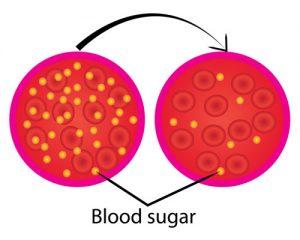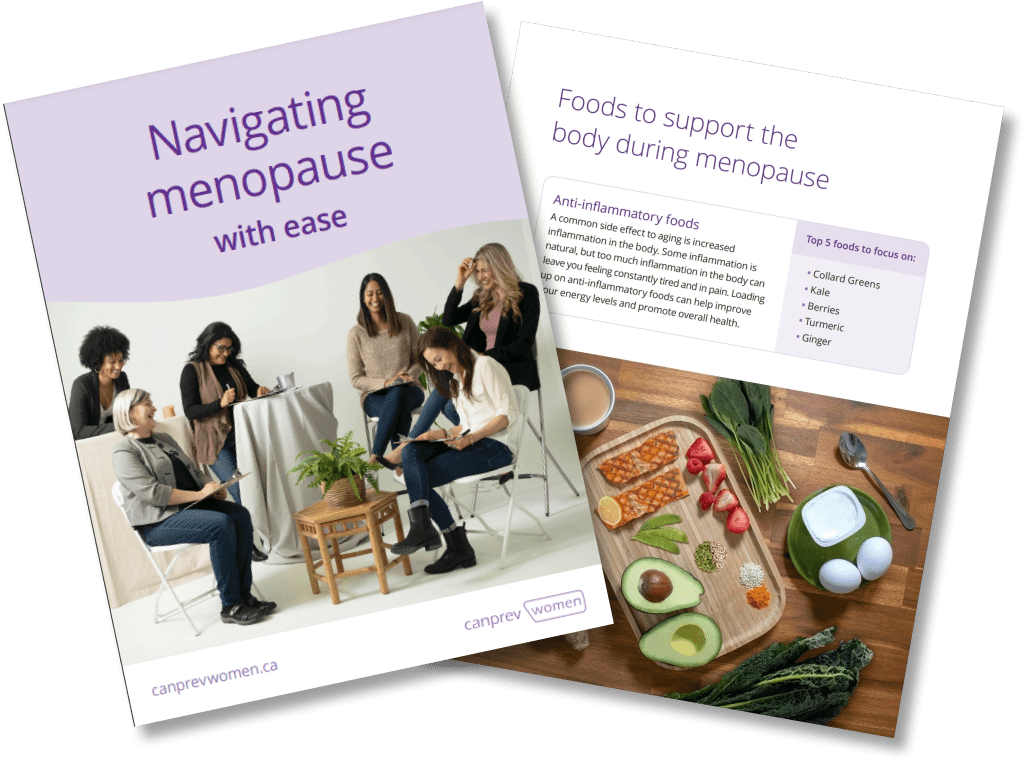Our chemical messengers HORMONES are at the helm of nearly every cellular action in our bodies. Most of the time, your hormones are continually fluctuating, but usually in predictable patterns.
However, it’s also expected that your hormones will fluctuate more dramatically at certain life stages as in puberty, pregnancy, and perimenopause. But when the changes become too extreme and your body can’t return to a natural hormonal equilibrium, that’s when problems can arise.
The reality is that hormonal imbalances are increasingly more common now, so it likely feels ‘normal’ to most women. But we’re here to tell you that being “unbalanced” is not normal – and there are plenty of things you can do to get those hormones playing nice again!
What does it mean to have a hormonal imbalance?
What is a hormonal imbalance, what causes them, what are the symptoms, what are health conditions related to imbalances, how do you “fix” an imbalance, what if I have more than one?
We get it — you’ve got questions, and we’ve got answers!
What are the symptoms of hormonal imbalances?
Here are some of the signs that you probably have a hormonal imbalance (or two):
- Menstrual cycle irregularities (including spotting not associated with the menstrual cycle), which can lead to fertility issues
- Irregular or poor sleep
- Lethargy & fatigue – that’s not alleviated by sleep
- Hot flashes &/or night sweats
- Low libido & sexual dysfunction (including vaginal dryness & pain during intercourse)
- Skin issues, like adult acne, and dry or rashy skin
- Skin changes, like skin tags & other abnormal growths, and darkening of skin, especially along neck creases, in the groin, and underneath breasts
- Digestive issues, like bloating, constipation, diarrhea & indigestion/heartburn
- Hair loss, thinning & unusual hair growth (on face, neck & body – places it didn’t grow before!)
- Temperature regulation issues – sensitivity to hold and/or cold
- Urinary changes – need to go to the bathroom more frequently
- Hormonal headaches
- Mood issues – irritability, anger & moodiness
- Difficulty concentrating & foggy thinking (brain fog)
- Mental health issues – depression, anxiety & nervousness
- Heart palpitations (usually due to anxiety & nervousness)
- Excessive sweating, and changes in body odour
- Development of a fatty hump between the shoulders (“buffalo hump”)
- Weight gain and/or weight loss resistance and/or changes in weight distribution, i.e. carrying excess body weight in places where you didn’t previously, especially around the belly
- Development of, or increased PMS…
But, what exactly is PMS, and who gets it?
The occurrence of premenstrual syndrome (PMS) is reported by up to 85% of women of reproductive age. PMS is a set of somatic and psychological symptoms that occur during the time of the luteal phase of the menstrual cycle — after ovulation and prior to the start of flow.
PMS is, therefore, linked to hormone fluctuations (changes in sex hormones, like Estrogen) that occur during your menstrual cycle. Also, due to the incidence of mood changes reported by PMS sufferers, researchers also believe that it’s related to a drop in serotonin levels at the beginning of the menstrual cycle.
Most women have mood swings, tender breasts, digestive disturbances like bloating & constipation, and backaches or other muscle aches a few days before they start their periods.
While these are considered normal premenstrual symptoms, it’s when they disrupt your daily life or become more dramatic that they’re considered PMS.
Medical professionals don’t fully understand why PMS symptoms are worse in some women than in others, but it is known that there is a genetic component, and there is a higher chance you’ll have PMS if there is a family history.
Also, if you have PMS, the symptoms may get worse in your late 30’s and 40’s, as you approach perimenopause. But, when symptoms are severe, the condition is called premenstrual dysphoric disorder (PMDD) – but this condition is considered rare.
What are the most common hormone imbalances that women experience? 
- Estrogen dominance (and/or low progesterone) – when estrogen is too high relative to progesterone, i.e. the ratio of the two sex hormones is imbalanced
- Low or underactive thyroid (hypothyroidism)
- Blood sugar imbalances – typically high insulin and insulin resistance.
- High cortisol and dysregulated adrenals – think belly fat!
- Androgen imbalance, including polycystic ovarian syndrome (PCOS) when testosterone and other androgens are at abnormally high levels OR low testosterone – hello, no sex drive!
Even though there are many different types of hormonal issues, such as those listed, most women have multiple imbalances (domino effect!), and even the causes often overlap. This is due to the “cross-talk” between the complex endocrine system and other body systems.
What causes hormonal imbalances besides just age and stage of life?
Things like medications (e.g. the Pill), chronic stress & inflammation (e.g. leaky gut & digestive system inflammation), poor nutrition, blood sugar problems, disrupted sleep/wake cycle, exposure to toxins & endocrine disruptors, like xenoestrogens, could all cause hormonal imbalances – multiple ones in fact!
Causes of hormonal imbalances related to dietary choices may include:
- Excess consumption of red meat (and other animal products like dairy, especially highly processed forms)
- Excess consumption of sugar (including natural fruit sugars – beware your daily fruit-packed smoothie!)
- Excess consumption of caffeine, salt, alcohol & chocolate
- Too little water consumption
- Too few foods containing adequate B vitamins (especially B6 & folic acid), calcium & magnesium
5 “Do’s” when dealing with hormone imbalances
Here are the top 5 things you should focus on to support your body & mind, especially if you have multiple hormonal imbalances:
- Eat more “good” fats like hemp seeds, flax seeds, walnuts, avocados, salmon and olive oil — and no, eating the right kinds of fats does not make you fat! Sugar on the other hand…
- Exercise daily – sweating daily wouldn’t hurt either!
- Sleep, sleep, sleep
- Manage your stress and implement a daily self-care routine
- Eat whole foods and supplement smart — as you may know, supplements, even really high-quality ones, do not replace a healthy, balanced diet!
However, when you are going to supplement your diet, here are a few key nutrients we recommend, especially for women over 40 and those experiencing hormonal imbalances at any age:
Vitamin D3 (+K2)
Magnesium
Calcium
Folic acid
Vitamin B6
FYI – these are all recommended to help manage PMS symptoms as well.
CANPREV ALSO RECOMMENDS:
Healthy HormonesTM is an all-natural formula designed to help stabilize menstrual cycle irregularities and relief of PMS. It contains a clinically significant 400 mg daily dose of indole-3-carbinol. Other key nutrients and herbs in the formula work synergistically to ease PMS and normalize hormones.
I-3-C 200 Do you experience gas and bloating that sometimes accompanies eating indole-3-carbinol-rich cruciferous vegetables? I-3-C 200 gives you the antioxidant and healthy estrogen metabolism benefits you need quickly and without the uncomfortable side effects.
Magnesium Sleep (GABA + Melatonin) – augmenting our Extra Gentle magnesium form with melatonin and GABA, this formulation is designed to help people relax, reset their circadian biological clocks, get better sleep while reducing the time needed to fall asleep for people with delayed sleep phase disorder.
Healthy Hair is a clinically proven formula to improve the volume, health, and beauty of your hair. The science behind hair nutrition is exciting and growing, and we are excited to offer a clinically proven formula that offers promising results for those who experience hair loss or are looking to stimulate hair regrowth.
REFERENCES:
Women’s Health Network – Symptoms of Hormonal Imbalance
Healthline (December 2017) – Everything You Should Know About Hormonal Imbalance
OnHealth (May 2019) – Women’s Health: 25 Hormone Imbalance Symptoms & Signs
International Journal of Endocrinology & Metabolism (April 2016) – Comparison of Metabolic and Hormonal Profiles of Women With and Without Premenstrual Syndrome
Healthline (August 2016) – PMS: Premenstrual Syndrome
HealthLink BC (May 2018) – Premenstrual Syndrome (PMS)


